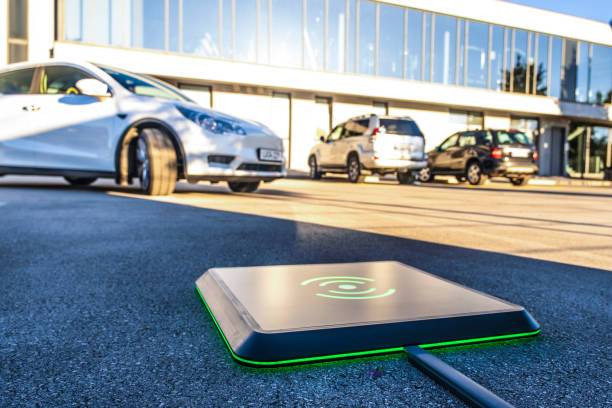In a world where electric vehicles (EVs) are no longer just futuristic concepts but a vital component of our transportation ecosystem, the way we power them is undergoing a transformation. According to a 2023 report by Bloomberg Green, 60% of urban drivers find the lack of convenient charging options a major deterrent to EV adoption. Enter wireless charging—a technology poised to revolutionize urban EV infrastructure. In this article, we’ll explore how wireless charging is changing the landscape of city driving, making EV ownership more practical and appealing than ever.
The Rise of Wireless Charging: A Game Changer for Urban EVs
Wireless charging, also known as inductive charging, eliminates the need for physical connectors. It uses electromagnetic fields to transfer energy between two coils, typically embedded in a ground pad and a vehicle. This technology is not just a futuristic dream; it’s here, and it’s gaining traction fast.
Why Wireless Charging?
- Ease of Use: Simply park your EV over a wireless charging pad, and the charging begins automatically. No more fumbling with cables in inclement weather.
- Safety: With no exposed connectors, the risk of electric shock or fire hazards is significantly reduced.
- Durability: Less wear and tear on charging ports and cables, reducing maintenance costs.
Current Implementations and Projects
Cities worldwide are testing and implementing wireless charging infrastructure. For example, Oslo has partnered with Finnish utility Fortum to install wireless charging pads for taxis, aiming for a fully electric taxi fleet by 2025. Similarly, in the U.S., the city of Los Angeles is piloting wireless charging for public buses, enhancing efficiency and reducing operational downtime.
How Wireless Charging Works: The Technology Behind the Magic
Understanding the mechanics of wireless charging can demystify its operation and highlight its potential benefits for urban settings.
The Science of Inductive Charging
- Transmitter Coil: Installed on the ground, this coil generates an alternating magnetic field when connected to a power source.
- Receiver Coil: Located in the vehicle, this coil picks up the magnetic field and converts it into electrical energy to charge the battery.
- Resonant Coupling: This ensures energy is efficiently transferred over a short distance, typically a few centimeters.
Advantages Over Conventional Charging
- Seamless Integration: Charging pads can be embedded in parking spots, garages, and even roads, offering a clutter-free environment.
- Scalability: Ideal for high-density areas where space is at a premium.
- Future-Proofing: As EVs become more prevalent, wireless charging offers a scalable solution for growing urban needs.
Practical Applications and User Benefits
While the technology is impressive, its real-world applications and benefits are what truly matter to EV drivers.
Where to Find Wireless Charging Stations
- Public Parking Garages: Many urban centers are retrofitting parking facilities with wireless pads.
- Residential Complexes: Developers are increasingly incorporating wireless charging into new housing projects.
- Commercial Fleets: Companies with electric fleets are adopting wireless charging to streamline operations.
Tips for Maximizing Wireless Charging Efficiency
- Positioning: Ensure your vehicle is properly aligned over the charging pad for optimal energy transfer.
- Regular Updates: Keep your vehicle’s software updated to benefit from the latest efficiency improvements.
- Combine with Solar: If possible, pair your wireless charging setup with solar panels to maximize sustainability.
The Future of Urban Mobility: Wireless Charging Trends and Predictions
As we look to the future, wireless charging stands out as a key enabler of sustainable urban mobility. According to a report from the International Energy Agency (IEA), wireless charging could reduce the need for dedicated charging spaces by up to 30%, making it a vital component of smart city planning.
Key Trends to Watch
- Integration with Autonomous Vehicles: As self-driving cars become a reality, wireless charging will be crucial for autonomous fleets that require minimum human intervention.
- Dynamic Charging: Research is underway to develop roads that charge vehicles as they drive, potentially eliminating range anxiety altogether.
- Cross-Industry Collaborations: Expect to see partnerships between automotive, technology, and energy companies to accelerate the deployment of wireless infrastructure.
Final Thoughts
In conclusion, wireless charging is not just an innovative convenience but a transformative force that could redefine urban EV infrastructure. By making charging more accessible, efficient, and user-friendly, it paves the way for a broader adoption of electric vehicles, contributing significantly to a sustainable future.
Are you ready to embrace the wireless revolution? Share your thoughts on how wireless charging could impact your daily life and urban environment. As cities continue to evolve and adapt to the demands of modern transportation, the possibilities are as electrifying as the technology itself.

